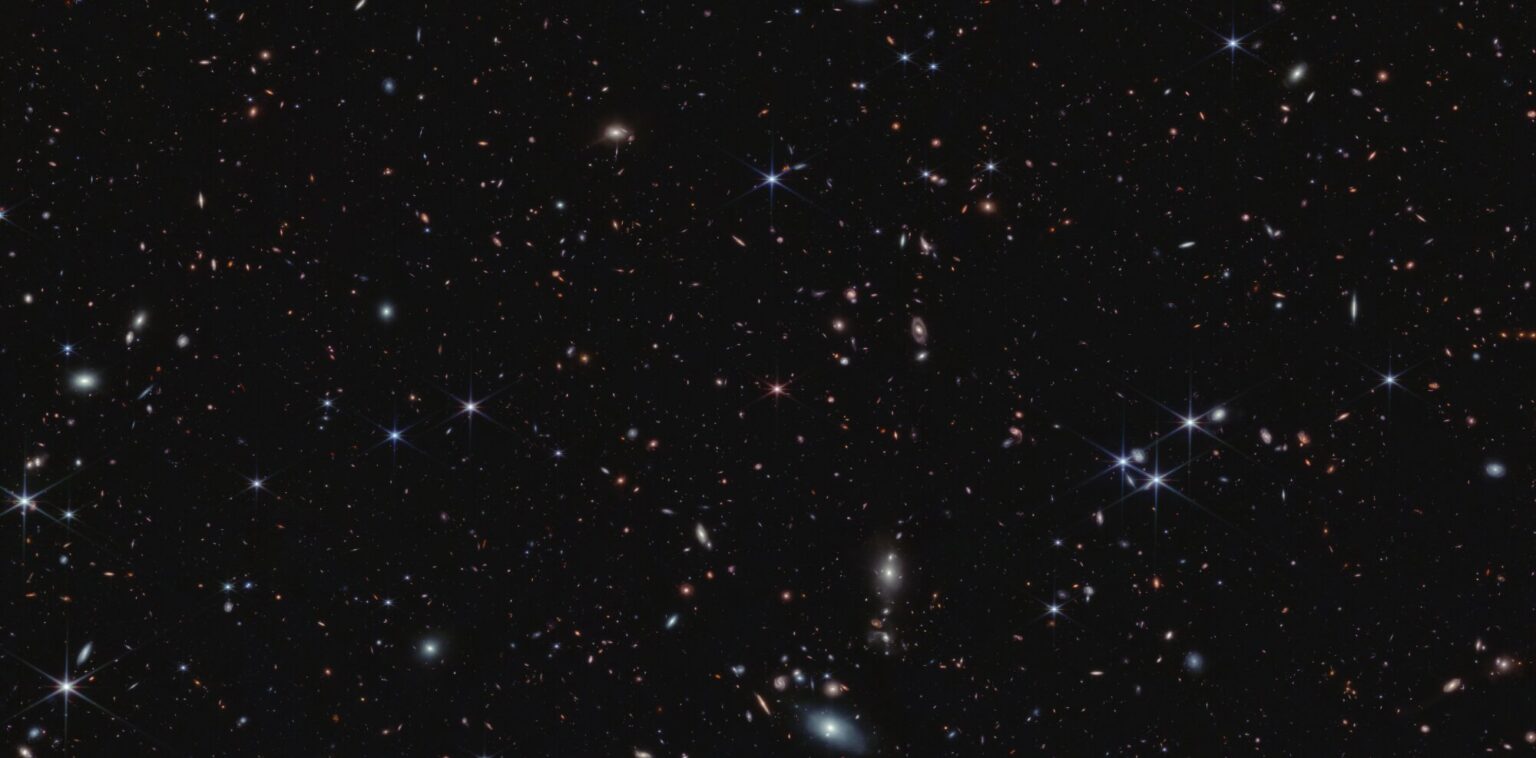Scientists working with the James Webb Telescope have found evidence that during the so-called “Era of Reionization” the universe became transparent due to the radiation of the first galaxies. Quasars helped them in this, highlighting the distant past.

Mysterious “Era of Reionization”
A new article dedicated to the study of early galaxies using the James Webb Telescope was recently published by scientists from the University of Zurich. In it, they were able to prove that sometime at the dawn of its existence, the universe became transparent due to the radiation of the first stars and galaxies.
We are talking about the so-called “Era of Reionization“, which existed between the cosmic “dark ages” and the current state of the Universe. The fact that it was the radiation of stars that ionized interstellar gas and made it transparent to light was usually presented as proven, but this was not entirely true.
Scientists know that in the beginning, the universe was filled with hot and opaque gas. Then the gas cooled down, but still remained opaque. And after that, it warmed up again and became transparent. That’s all scientists have been sure of so far. And the radiation of galaxies was the most likely, but not the only possible one.
First galaxies in the light of a quasar
And scientists decided to finally make sure that it was the first galaxies that caused the ionization of gas. For this purpose, they tried to look into those areas of the universe that we see as they were directly during the “enlightenment”. They are more than 13 billion light-years away from us.
Quasars helped to see them. These giant active black holes are located inside galaxies and release jets of matter that, like flashlights, illuminate the distant past for us. Thanks to them, scientists saw that the space during the era of reionization was generally opaque, but full of giant “bubbles” through which light passed freely.
And what is most interesting, in the center of each of them was a tiny spot, which was actually a galaxy. So it was its radiation that caused the ionization of interstellar gas in a bubble which diameter reached 2 million light years. In order to make sure that this was not an accident, scientists examined other areas of the sky “illuminated” by quasars.
They expected to see a couple dozen galaxies surrounded by transparent bubbles. But there were 117 of them — much more than it was supposed to be. So the process of gas ionization was really massive and took place in huge volumes.
We see these galaxies as they were 900 billion years after the Big Bang. They are mostly smaller, but more chaotic than modern ones and have a rather unusual structure, which indicates that very turbulent processes took place in them at that time.
According to phys.org
Follow us on Twitter to get the most interesting space news in time
https://twitter.com/ust_magazine
